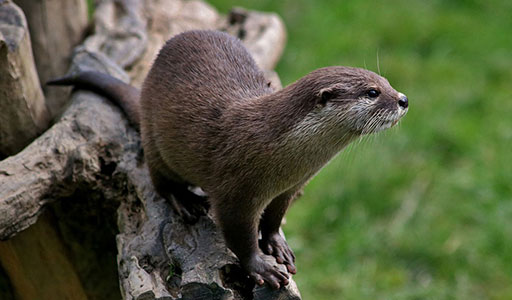Otter Control
Do you need to get rid of otters? We can help!

Otter Removal Strategies
Allow Trutech’s otter control services professionals to carefully handle the situation in the most humane and environmentally sound manner. Otters are not dangerous to people except for when they become defensive. However, they are also capable of spreading disease, making them dangerous if contacted. Because otters are legally protected, trapping and removing them yourself can result in many adverse legal consequences. Not to mention, you could catch transmittable diseases, even if the animal is already deceased. By letting the professionals at Trutech handle all of your otter removal needs, you can ensure a humane, safe, and diligent treatment of these creatures without it weighing heavy on your heart or having to lift a finger.
Don’t hesitate to reach out to Trutech for our expert otter removal services. Our professionals are here to help keep these pests away from your property. When you trust Trutech to handle all of your wildlife removal services, you are getting the most thorough service and protecting yourself from any health or legal consequences. Don’t wait any longer– call Trutech today.
Hear what a Otter sounds like
Otter Problem

Signs a Otter is on Your Property
Otters are friendly, semi-aquatic animals that feed heavily on fish, shellfish, and sometimes even waterfowl. Although otters are not known to bother humans directly, their fish hunting activities can be problematic to water areas that humans frolic and the surrounding infrastructures, making otter control and removal necessary. Their hunting activities on water and land can result in significant financial losses for fish farms and other businesses and should be handled quickly, safely, and effectively.

Dangers of Otter Infestation
Although they are usually friendly, otters will become defensive when they feel threatened. However, very few otter incidents have been reported. Commercial fish farms can suffer significant financial losses if families of otters take up residence in their fish reservoirs. Property owners with fish-filled ponds also experience financial losses.
Humane Otter Removal & Control Strategies

Entry into property
As semiaquatic animals, otters have been spotted running and lounging on land. Still, they are not known to enter homes or other buildings. Properties containing bodies of water, such as lakes or ponds, run the highest risk of otter infestations.

Trapping & Removal
Since they are legally protected furbearing animals, otters should not be killed without proper certification from local authorities. To avoid fees and jail time, property owners are encouraged to contact wildlife control specialists at the first indication of otter activity. Using integrated pest management techniques, Trutech professionals expertly craft multi-faceted and well-researched plans to achieve safe and humane otter removal.

Prevention & Exclusion
To exclude otters from private properties, landowners should erect fences around at-risk water systems. Modifying preferred otter habitats by limiting the availability of shellfish, fish, and frogs is another method of controlling otter populations. As the wild animals can carry diseases transmittable to humans, it is essential to avoid contact. Dead otters must be disposed of properly, which involves calling professional services to ensure sanitary removal procedures.
Frequently Asked Questions
With its friendly and playful reputation, an otter doesn’t usually top anyone’s list of dangerous animals. Many people are surprised to learn that these water-loving pests are actually apex predators. They have even been seen attacking and eating young alligators.
While the animals are not prone to conflicts with people, there have been around 40 cases of otter attacks against humans. More than half of those incidents occurred in the last two decades. Scientists blame this on increasing development edging otters from their natural habitat.
Trutech will inspect the property and come up with a plan to solve the otter issue quickly and efficiently. The process includes specific trap placement in active areas. Otters like to travel along borders, walls, and embankments. Because of this behavior, we trap in these areas.
If active areas in the community are surrounded by heavy human traffic, we will mark off the area with caution tape and install signs indicating that a trapping session is taking place and the area is prohibited for entry. We do not want to portray a negative public appearance; therefore, all trapping sessions must be approved by both Trutech and the community board or homeowners’ association. If both parties approve, we will undergo the trapping session and remove the otters from the area.


